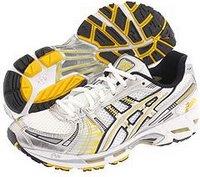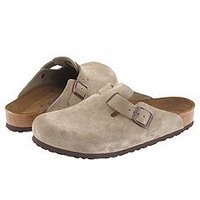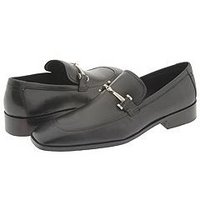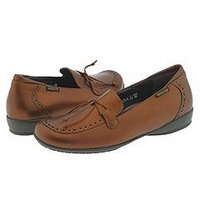How to select cycling shoes?
 Selecting the appropriate cycling shoe isn’t as easy as it used to be. Like a lot of athletic shoes, cycling shoes have become increasingly specialized. There are multiple pedal systems, and different types of cycling from spinning, to cyclocross, to road, mountain and triathlon biking. Casual cyclists do not need to worry about purchasing cycling shoes but for those who ride 3 or more times per week, a cycling shoe and pedal system can improve your performance.
Selecting the appropriate cycling shoe isn’t as easy as it used to be. Like a lot of athletic shoes, cycling shoes have become increasingly specialized. There are multiple pedal systems, and different types of cycling from spinning, to cyclocross, to road, mountain and triathlon biking. Casual cyclists do not need to worry about purchasing cycling shoes but for those who ride 3 or more times per week, a cycling shoe and pedal system can improve your performance.Mountain and recreational biking shoes have a recessed cleat and a flexible sole. The recessed cleat and flexibility of the shoe make it easier to walk which is great for mountain bikers who may need to carry their bike over an obstacle or a recreational biker who wants to bike across town to check out the art fair.
Some models of cycling shoes are designed to combine the performance features of a competitive shoe and the comfort and flexibility of a recreational shoe. For example, a newer category of cycling shoe was born out of the popularity of stationary biking classes that are offered at many athletic clubs. These shoes fall somewhere between the casual riding shoes and competitive models. They tend to have more breathable uppers to compensate for the lack of airflow during stationary riding. Triathlon cycling shoes usually have one to three velcro straps to allow for easy entry and exit during transitions.
Additional Information

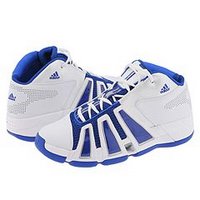 Designing athletic shoes is an interesting job that requires either a direct knowledge of science, particularly
Designing athletic shoes is an interesting job that requires either a direct knowledge of science, particularly 
 The most practical reasons for donning specialized footwear are to protect feet from injury, permit us to do a better or easier job, and improve our performance. Around the world and throughout history footwear has been designed in unique ways to satisfy these needs.
The most practical reasons for donning specialized footwear are to protect feet from injury, permit us to do a better or easier job, and improve our performance. Around the world and throughout history footwear has been designed in unique ways to satisfy these needs.
 Among the diverse peoples on the Indian subcontinent, the foot is both the most base and the most revered part of the human body. Traditionally the ritual, symbolic and allegorical significance of footwear has overshadowed its utilitarian and functional value.During the Divali Festival (Festival of Lights), which marks the end of the Hindu calendar year in October or November, Lakshmi, the Goddess of Prosperity and Good Fortune, is invited to enter the house. Painted footprints of the Goddess are worshipped and honoured with offerings and oil lamps to light her way into the home.Follow the footprints of Lakshmi; discover how the paduka has resonated through five millennia of history and continues to be an important element of Indian culture to this day.
Among the diverse peoples on the Indian subcontinent, the foot is both the most base and the most revered part of the human body. Traditionally the ritual, symbolic and allegorical significance of footwear has overshadowed its utilitarian and functional value.During the Divali Festival (Festival of Lights), which marks the end of the Hindu calendar year in October or November, Lakshmi, the Goddess of Prosperity and Good Fortune, is invited to enter the house. Painted footprints of the Goddess are worshipped and honoured with offerings and oil lamps to light her way into the home.Follow the footprints of Lakshmi; discover how the paduka has resonated through five millennia of history and continues to be an important element of Indian culture to this day.
 "My grandmother taught me to sew my respect for the animal spirits into the boots and parkas I make." Lydia Apatiki, Gamble, St. Lawrence Island, Alaska, 1988In coastal Alaska, whale and caribou hunters, salmon fishers, hunters on offshore islands and residents of forested fiords thrived in a world where all aspects of the environment possessed spirits.Hunters and seamstresses created footwear, clothing and tools that appeased and communicated with the spirit world. Amulets and designs on visors, kayaks, clothing and tools hid the hunter's identity, transforming the hunters into powerful predators, and protecting them from storms and other dangers.
"My grandmother taught me to sew my respect for the animal spirits into the boots and parkas I make." Lydia Apatiki, Gamble, St. Lawrence Island, Alaska, 1988In coastal Alaska, whale and caribou hunters, salmon fishers, hunters on offshore islands and residents of forested fiords thrived in a world where all aspects of the environment possessed spirits.Hunters and seamstresses created footwear, clothing and tools that appeased and communicated with the spirit world. Amulets and designs on visors, kayaks, clothing and tools hid the hunter's identity, transforming the hunters into powerful predators, and protecting them from storms and other dangers.



